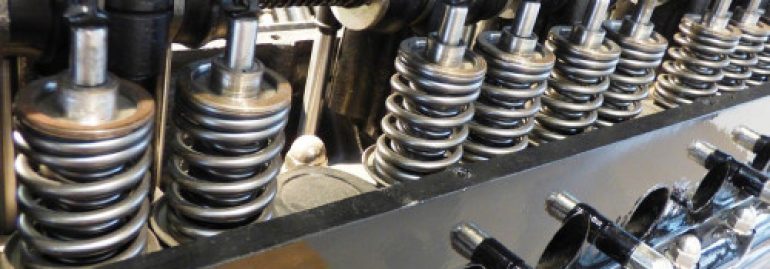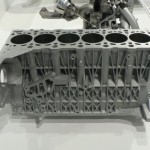Cylinders are the chambers in an engine where fuel is burned and power created. These play a significant role in how cars and SUV engines function.
Engines typically consist of four, six or eight cylinders. Each cylinder houses a piston, inlet and exhaust valves, spark plug, and fuel injector.
Inline
Cylinders are the empty chambers in a car engine that contain fuel. When this mixture of fuel and air gets compressed, it creates the power that propels your vehicle forward. A piston moves up and down within the cylinder to convert this energy into forward momentum for your automobile.
Typically, cars have only two to four cylinders. However, some high-end models use more cylinders, such as the 10-cylinder Dodge Viper or 12-cylinder Chevrolet Cavalier.
Modern cars typically feature four cylinder engines. These reciprocating designs feature cylinders that can be arranged horizontally or vertically along a common crankshaft, although some vehicles also feature six or eight cylinders.
These engines are straightforward to construct and can be cost-effective to run. They require fewer cylinder heads and camshafts than V-shaped or flat engines, making them a great option for budget-minded engineers.
They provide a comfortable ride and are naturally balanced to reduce vibrations for drivers and passengers alike. As such, they tend to be used in compact or more affordable cars where space may be an issue.
Another advantage of inline engines is that they require fewer camshafts than V-shaped or straight-six engines, making them cheaper to manufacture and easier to service. Furthermore, inline engines can be utilized in more compact and lightweight cars to enhance fuel economy while still offering plenty of power.
Inline engines can be more energy-efficient than their flat or V-shaped counterparts, as they don’t need as much metal in the block. Furthermore, inline engines use less fuel to generate the same amount of horsepower and torque.
Engineers when designing an engine must select a configuration that meets their performance, size, cost and position requirements. This decision is dependent on the type of car and other variables; thus, it is not always an easy one to make.
The 4-cylinder engine is the most widespread type of engine. Inline engines, found in almost all four-cylinder cars, are easy to work on if you have access to the cylinder head and some basic knowledge about valve train maintenance.
A four-cylinder engine is more compact than its six or eight cylinder counterparts, allowing the car to fit into tighter spaces and be aerodynamically friendly. Plus, four cylinders produce more power than their larger counterparts so you get plenty of punch from a relatively small engine.
Other engine types exist as well, such as flat and rotary. Sports cars often opt for these because they generate high amounts of horsepower without creating excessive vibrations, plus they have a low center of gravity.
Straight
The number of cylinders in a car determines its output. Generally, larger and more numerous cylinders create more power than smaller and fewer units.
Car cylinders can be configured in various ways, but the two most popular layouts are inline and straight. Inline layouts are seen most frequently on family hatchbacks and compact cars while straight layouts tend to be found only in premium vehicles such as BMWs.
Inline engines typically feature one cylinder head housing two or three cylinders, running parallel to the engine bay with their pistons facing upward.
This makes them more efficient as they have reduced internal friction and can run at higher temperatures without producing excessive heat. Furthermore, they boast improved low-speed torque characteristics.
An inline engine’s design makes it simpler to work on, making it ideal for amateur mechanics as they can access spark plugs and other components more readily.
Though not as common as V or flat engines, straight engines remain an attractive option for many vehicle manufacturers. This layout is especially popular in front-wheel drive cars where space is essential, as well as trucks and SUVs that don’t require the extra power or torque that a V or flat setup provides.
Another advantage of a straight engine is its perfect primary and secondary balance. This is achieved due to pistons moving in tandem with each other and crank throws arranged in three planes offset at 120 degrees. This guarantees even reciprocating forces around the cycle, which reduces vibrations and provides smoother driving.
These advantages made straight-six engines a popular choice for vehicles with six cylinders until the 1970s, when V6 designs became more commonplace. While some manufacturers such as Ford continued to produce their own straight-sixes for passenger cars, by the 1990s most six cylinder engines were V6 powered.
V-configuration engines are a popular choice for many performance vehicles. These turbocharged motors can deliver up to 500bhp, and many high-powered sedans and sporty coupes use one as their primary source of power.
Although they remain popular, V-configurations may not always be the ideal choice for performance enthusiasts as they can be noisy and make the car uncomfortably loud. Fortunately, advances in technology and improved machining methods have allowed manufacturers to create more compact V-configurations that are less noisy yet offer greater power and torque than their predecessors.
Modern engine builders face a formidable challenge: designing motors that fit into small spaces while still producing adequate power and torque. This has necessitated various engine layouts over the years.
V
Cylinders in a car are the containers in which gasoline, air, and other fluids are ignited by spark plugs to produce power that propels it. Different types of cylinders exist, each with its own advantages and drawbacks.
Inline engines are the most prevalent type of cylinders used in vehicles, featuring a straight line arrangement. Inline cylinders can typically be found with four, six, or eight cylinders.
V-shaped cylinders are another popular engine type, often found in high-end sports cars and SUVs. Some sports cars even feature V12s – with a total of 12 cylinders.
These engines tend to be more powerful and faster than their inline counterparts, however they also use more fuel than standard 4-cylinder engines due to turbochargers forcing more air into the cylinders; increasing the amount of fuel necessary for production of power.
In the past, six or more cylinder engines were quite commonplace; however, today they’re becoming less common. Still, you can find V6s in many modern cars.
Before investing in a vehicle with a V6, it’s important to understand what you are getting into. These engines are intricate and come with additional parts which make them expensive to purchase.
They are taller than an inline engine, meaning that they require more room for the radiator and other components. This may lead to issues with cooling systems or radiator leaks.
One of the major disadvantages of V-engines is their tendency to vibrate more than an inline engine. This can be an issue for drivers, as vibration can occur in the steering wheel and other surfaces.
Drivers of any age or ability level should be mindful of this potential issue; the vibrations caused by having children or elderly relatives in the vehicle can be especially painful and uncomfortable for everyone inside.
Thus, most manufacturers use balance shafts to reduce vibration. You may need to check the balancing of your V6 or V10 regularly in order to guarantee it’s performing as intended.
Inline engines are another common option, though they come with their own drawbacks. Not as compact or lightweight as V-engines, inline engines may have difficulty fitting into certain vehicles and be expensive to manufacture.



